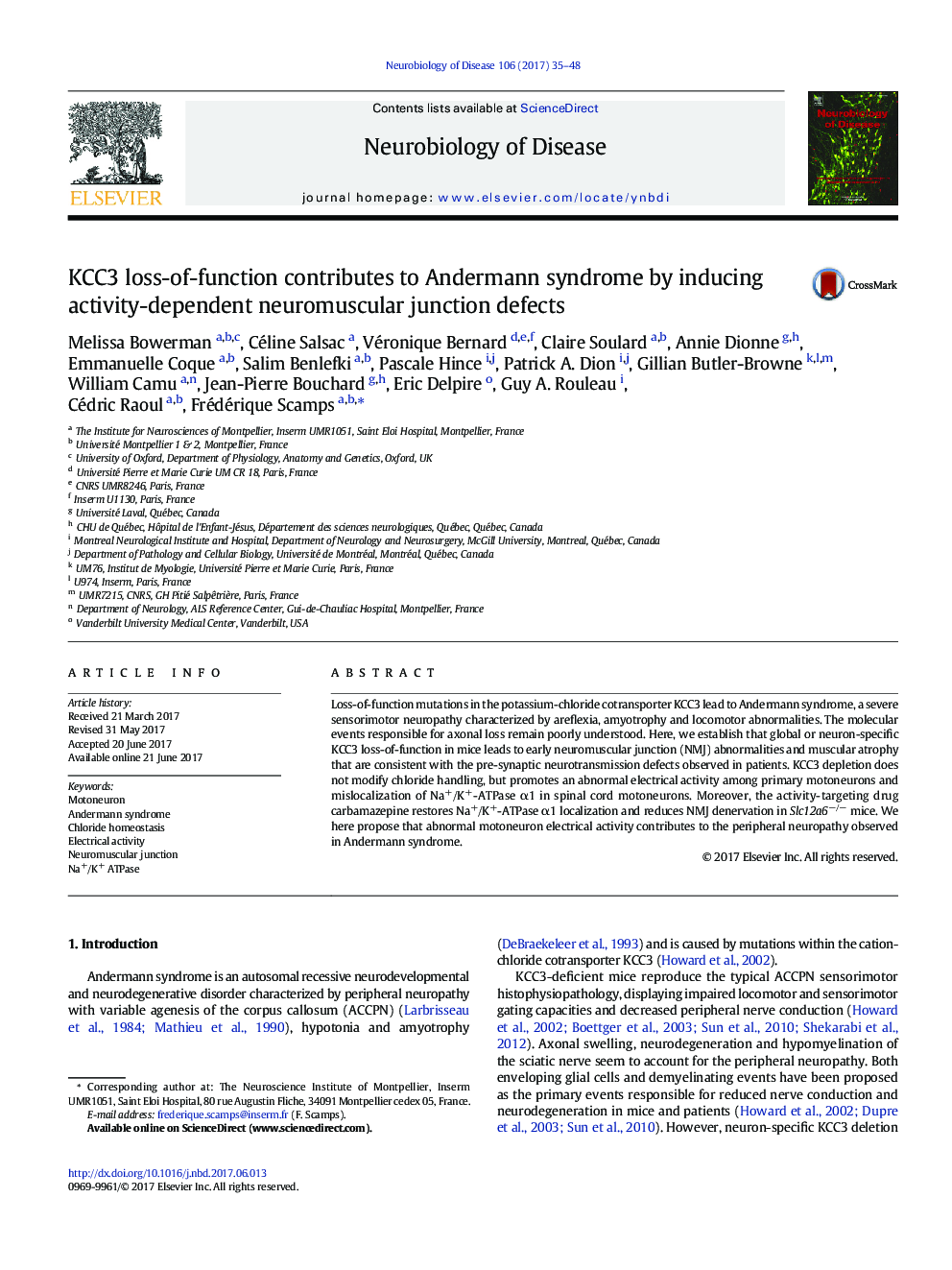| Article ID | Journal | Published Year | Pages | File Type |
|---|---|---|---|---|
| 5630583 | Neurobiology of Disease | 2017 | 14 Pages |
â¢Neuromuscular junction denervation is an early hallmark of KCC3-deleted miceâ¢KCC3 does not contribute to motoneuron resting chloride handlingâ¢KCC3 is involved in motoneuron plateau potential during firingâ¢KCC3 loss of function induces Na+/K+ ATPase α1 subunit mislocalizationâ¢Targeting electrical activity in vivo reduces neuromuscular junction denervation and restores Na+/K+ ATPase α1 pattern
Loss-of-function mutations in the potassium-chloride cotransporter KCC3 lead to Andermann syndrome, a severe sensorimotor neuropathy characterized by areflexia, amyotrophy and locomotor abnormalities. The molecular events responsible for axonal loss remain poorly understood. Here, we establish that global or neuron-specific KCC3 loss-of-function in mice leads to early neuromuscular junction (NMJ) abnormalities and muscular atrophy that are consistent with the pre-synaptic neurotransmission defects observed in patients. KCC3 depletion does not modify chloride handling, but promotes an abnormal electrical activity among primary motoneurons and mislocalization of Na+/K+-ATPase α1 in spinal cord motoneurons. Moreover, the activity-targeting drug carbamazepine restores Na+/K+-ATPase α1 localization and reduces NMJ denervation in Slc12a6â/â mice. We here propose that abnormal motoneuron electrical activity contributes to the peripheral neuropathy observed in Andermann syndrome.
